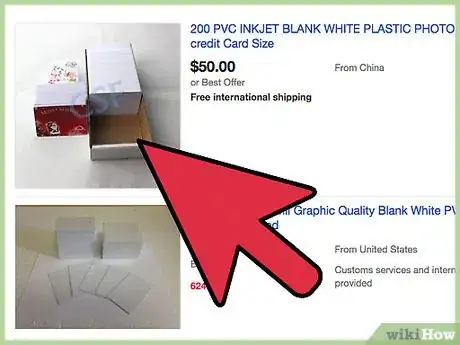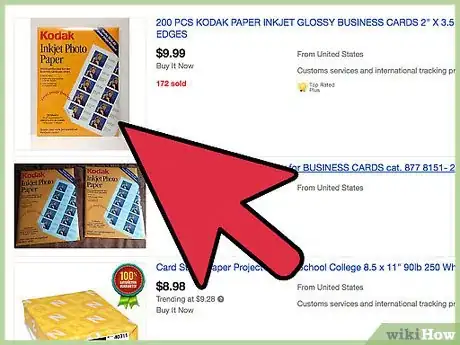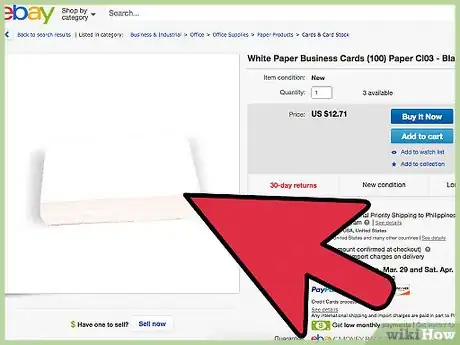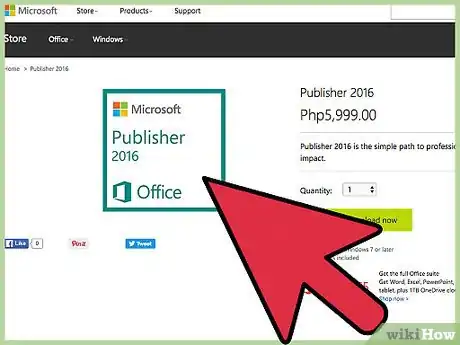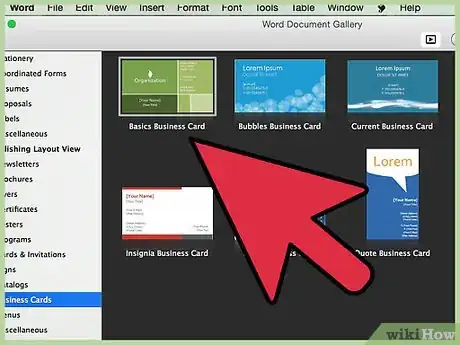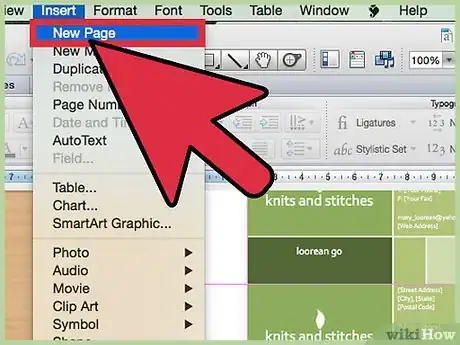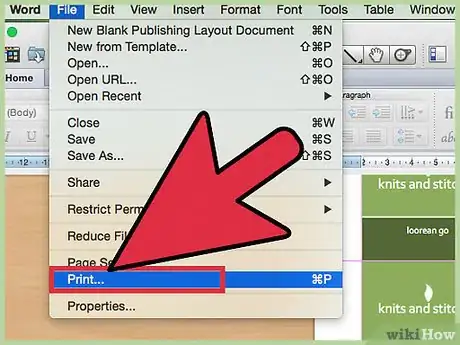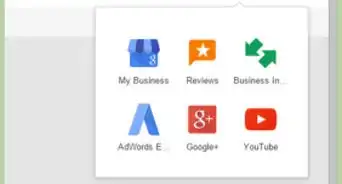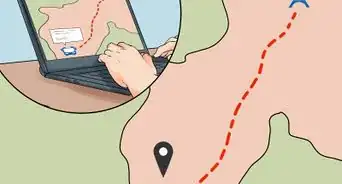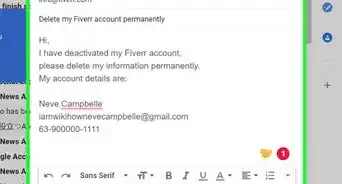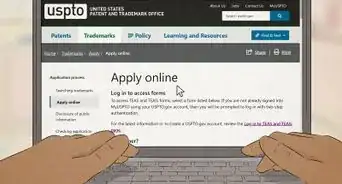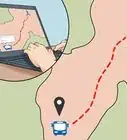This article was co-authored by Imran Alavi. Imran Alavi is a Marketing & App Development Expert and the CEO of Proleadsoft, a Digital Marketing and App Development firm based in San Francisco, CA. With over 10 years of experience, he specializes in Web Design, Search Engine Optimization (SEO), Search Engine Marketing (Google, Facebook, LinkedIn AdWords), App Development, and Software strategies for businesses. Imran holds a BS in Computer Science from the National University of Computer and Emerging Sciences, an MS in Computer Science from San Francisco State University, and has completed Stanford University Continuing Studies courses in Business, Marketing, and Communication.
There are 13 references cited in this article, which can be found at the bottom of the page.
This article has been viewed 165,692 times.
As long as you have a decent quality home printer, or access to the office machine, you may as well save some money and print your own cards. This guide covers the technical paper and printer instructions for professional-quality cards. The graphic design elements are up to you — or to an artistic friend who owes you a favor.
Steps
Choosing Cardstock
-
1Buy cardstock compatible with your printer. Look up your printer's maximum cardstock weight before you buy the paper. Most business cards are printed on 80 lb cover weight cardstock (215 grams per square meter), while some businesses prefer more durable paper up to 110 lb (200 GSM).[1] If using a home printer, check the manual to find its maximum paper weight. Cardstock too heavy for the printer may cause jamming, or (on a laser printer) flaking images.[2]
-
2Check the cardstock finish. Glossy paper may damage incompatible laser printers.[5] Inkjet printers require coated cardstock for a crisp image.[6]Advertisement
-
3Look for pre-scored paper (recommended). Consider saving yourself some cutting effort by printing on perforated business card paper. Choosing the standard size for your area is usually the most convenient option:[9]
- Standard business cards in the United States measure 2 x 3½" (51 x 89mm).
- The most common European size is 55 x 85 mm (2.12 x 3.37").
- Chinese business cards are usually 54 x 90mm (2.13 x 3.5"). Japan and Korea use slightly different sizes.[10]
- You may go with non-perforated paper, but using a paper cutter is tedious for large numbers of cards. Automated business card cutting machines are faster, but can be very expensive.
Designing and Printing the Business Cards
-
1Sketch a rough card layout. If you haven't already, sketch out your basic business card layout. Make sure to include the following information:
- Business logo and name as the most prominent information.
- Job title and company name.
- Phone, email, website, mailing address, and/or other contact information. Emphasize methods your customers use most.
-
2Design the card in Microsoft Publisher. Microsoft Publisher is designed for graphic layout of printed documents, but does not come with all versions of Office Suite. These instructions apply to Publisher 2010 and later:[11] [12]
- Open Publisher and select Business Cards on the Available Templates page, or go to File → New → Business Cards. Select the template that matches your design best.
- Adjust options if desired. Click Create when finished.
- To match the size of pre-scored sheets, choose a template listed under the sheet manufacturer, or adjust size under Page Design → Size → More Preset Page Sizes.
- Click placeholder text and logo to insert your own design. Experiment with menu options for greater customization.
-
3Use Microsoft Word instead. Word does not provides as many templates or as many tools for adjusting your design, but it works for basic designs. Here are three ways to get started on most versions of Word (2010 or later for Windows, 2011 or later for Mac):
- To choose an existing template, select File → New → Blank Document → Business Card → Print Business Cards. This requires an internet connection.
- To make your own design from scratch, click the Mailings tab in the top ribbon, then Labels. In the new ribbon tab, select Options and select the product you'll be printing on.[13]
- Avery and other business card sheet manufacturers may offer additional downloadable templates on their website.
-
4Add a reverse side to the business card (optional). If using Publisher, go to the Page Navigation pane, right click the current pane, and select Insert Page. Choose the layout option that best matches the design of your back.[14] If using Word, click Insert in the Pages ribbon tab, choose Blank Page, and design the back from scratch.
- Keep all vital information on the front side. The back is for a tagline, mission statement, or other less important info — and leaving it blank is a common choice.[15]
- Make sure the margin widths and number of copies per sheet are identical on both sides. Testing on ordinary, cheap paper first is recommended to ensure the two sides align exactly.[16]
-
5Print your business cards. If you selected the template that matched the product you're printing on, it should set your printer to the correct settings automatically. Otherwise, select Print and adjust the numbers under "Multiple copies per sheet" to match your paper product.
- For two-sided business cards, look for a "duplex" option in the settings. If your printer does not have duplex capability, you will need to print just the front side, then flip the paper and reinsert it before printing the back.
- Start with one page on ordinary, cheap paper to test the alignment. Hold two-sided cards up to a light to make sure the front and back align.
Community Q&A
-
QuestionDo I have to add my home address on a business card?
 Community AnswerNo. You could have as little or as much contact information as you like on your card.
Community AnswerNo. You could have as little or as much contact information as you like on your card.
Things You'll Need
- Business card paper
- Template
References
- ↑ http://paperworks.com/about-paper-weights
- ↑ http://boards.straightdope.com/sdmb/showthread.php?t=346048
- ↑ http://www.pcadvisor.co.uk/how-to/printing/how-print-on-card-3529651/
- ↑ http://www.epson.com/cgi-bin/Store/support/supDetail.jsp?UseCookie=yes&infoType=FAQ&oid=232592&prodoid=63099060&foid=254117
- ↑ http://www.dreamstime.com/thread_5312
- ↑ http://www.printerknowledge.com/threads/coated-paper-for-an-inkjet.6084/
- ↑ http://www.printerknowledge.com/threads/coated-paper-for-an-inkjet.6084/
- ↑ http://www.shortcourses.com/display/display2-6.html
- ↑ http://www.printernational.org/business-card-sizes.php
- ↑ http://www.asianbusinesscards.com/blog/2012/international-business-card-aspect-ratios/
- ↑ https://support.office.com/en-gb/article/Create-and-print-your-own-business-cards-in-Publisher-fd7f5b0f-4f46-4435-8d0e-6d9c2f911267
- ↑ http://www.thewindowsclub.com/create-a-business-card-using-microsoft-publisher-2010
- ↑ https://support.microsoft.com/en-us/kb/170130
- ↑ https://support.office.com/en-gb/article/Create-and-print-your-own-business-cards-in-Publisher-fd7f5b0f-4f46-4435-8d0e-6d9c2f911267
- ↑ http://www.entrepreneur.com/article/159468
- ↑ https://support.office.com/en-gb/article/Create-and-print-your-own-business-cards-in-Publisher-fd7f5b0f-4f46-4435-8d0e-6d9c2f911267
About This Article
To print your own business cards, check your printer manual to determine the maximum cardstock weight it can handle. Most business cards are printed on 80-110 lb cover weight cardstock. For crisp, clean edges, choose cardstock which is already scored. After you design your card, set your printer so it will print the correct number of cards per sheet, and test the alignment on regular printer paper. Once you’re sure it’s right, feed the cardstock into your printer through a manual feed if you have one, so the cardstock won’t be bent. Keep reading for tips on designing your cards!
